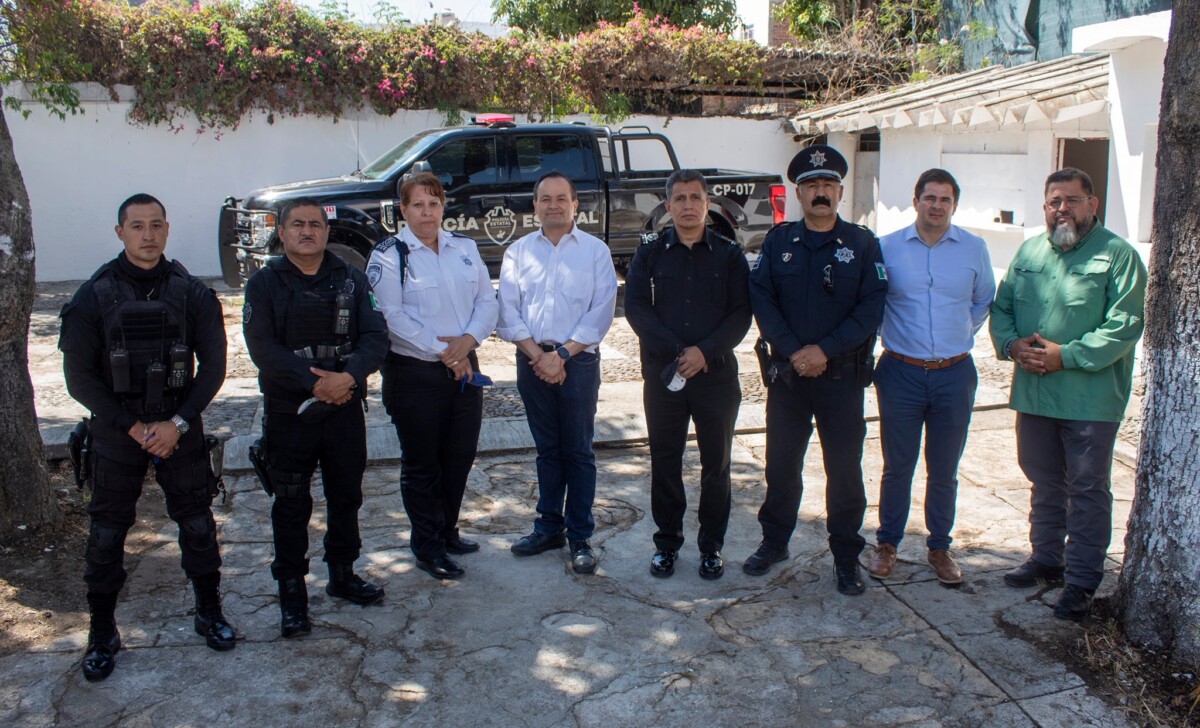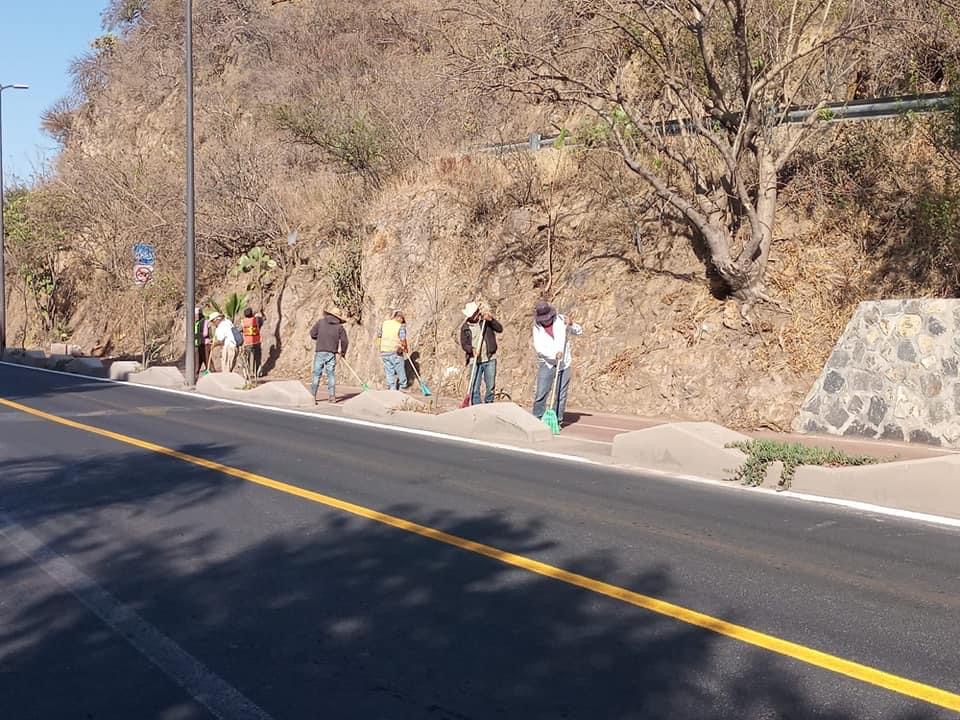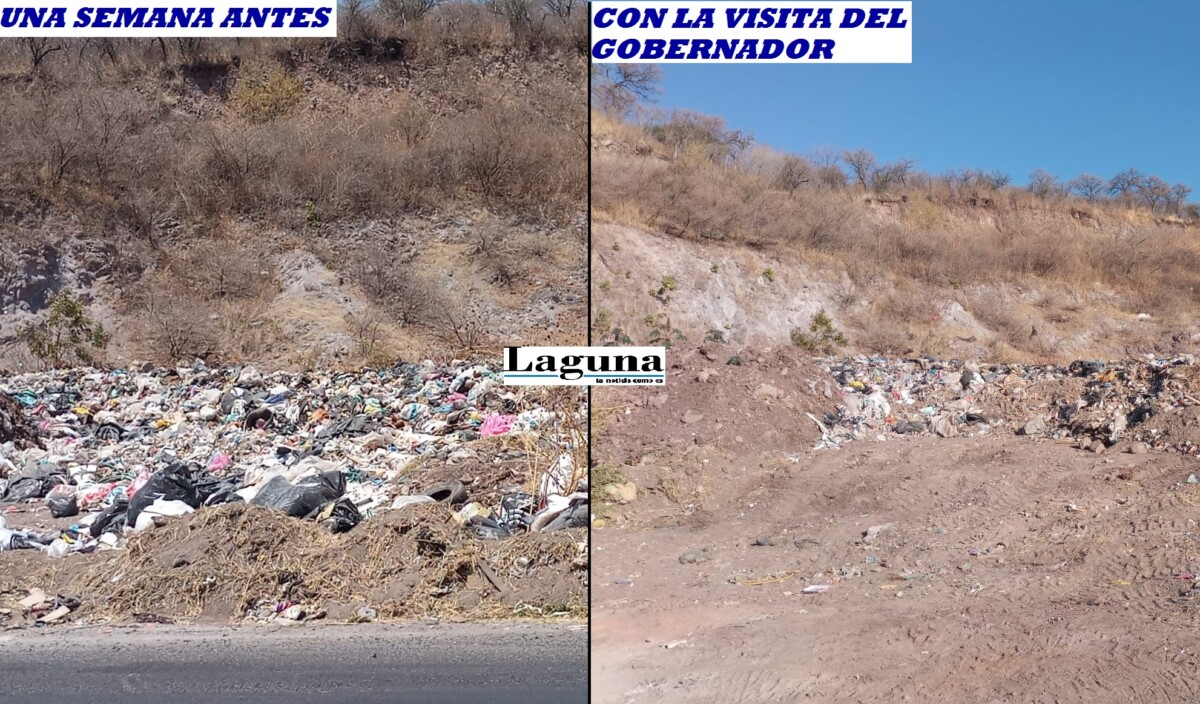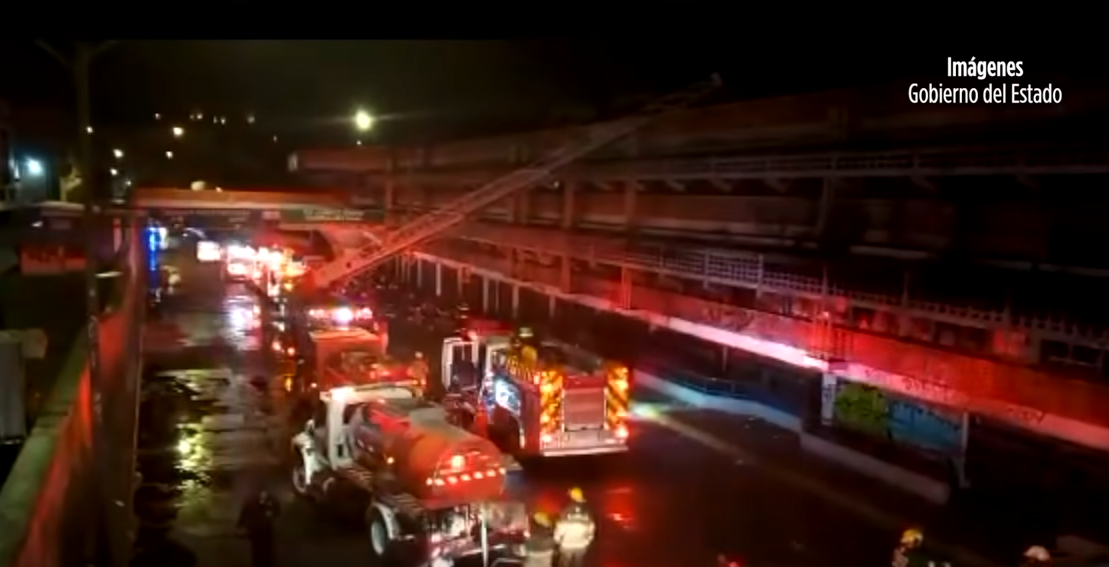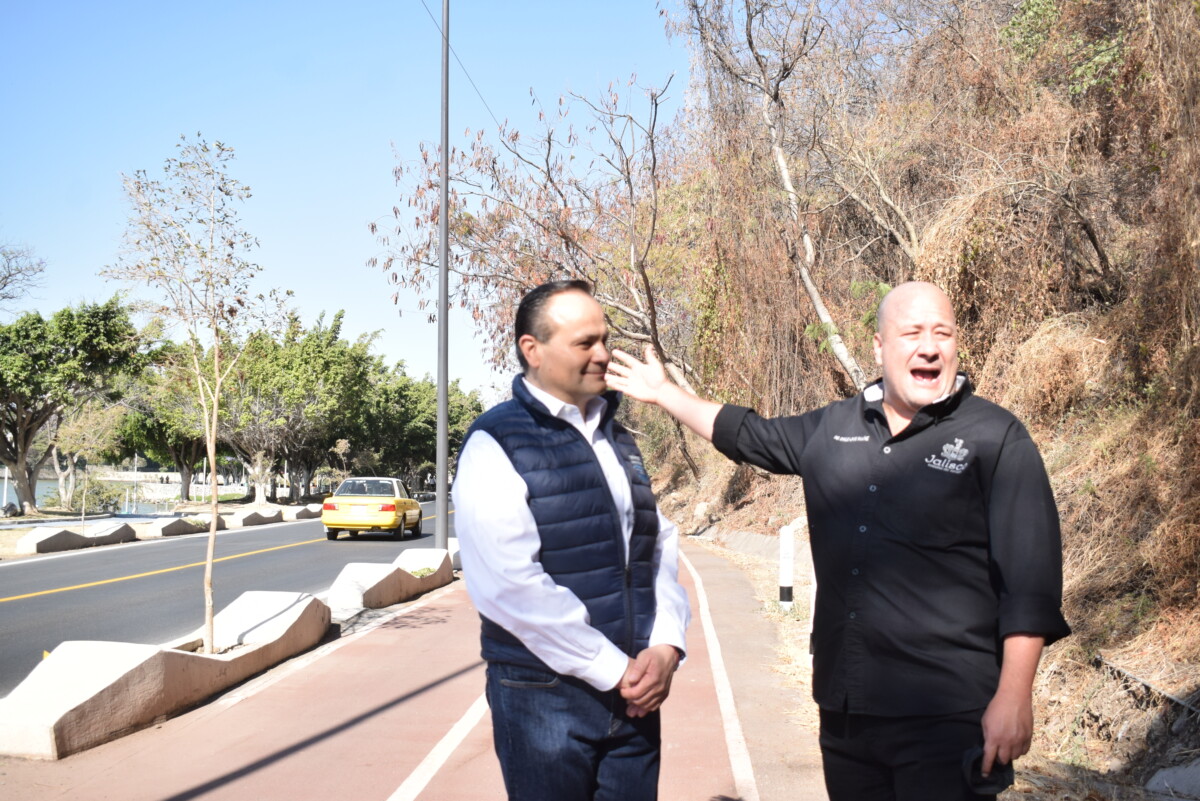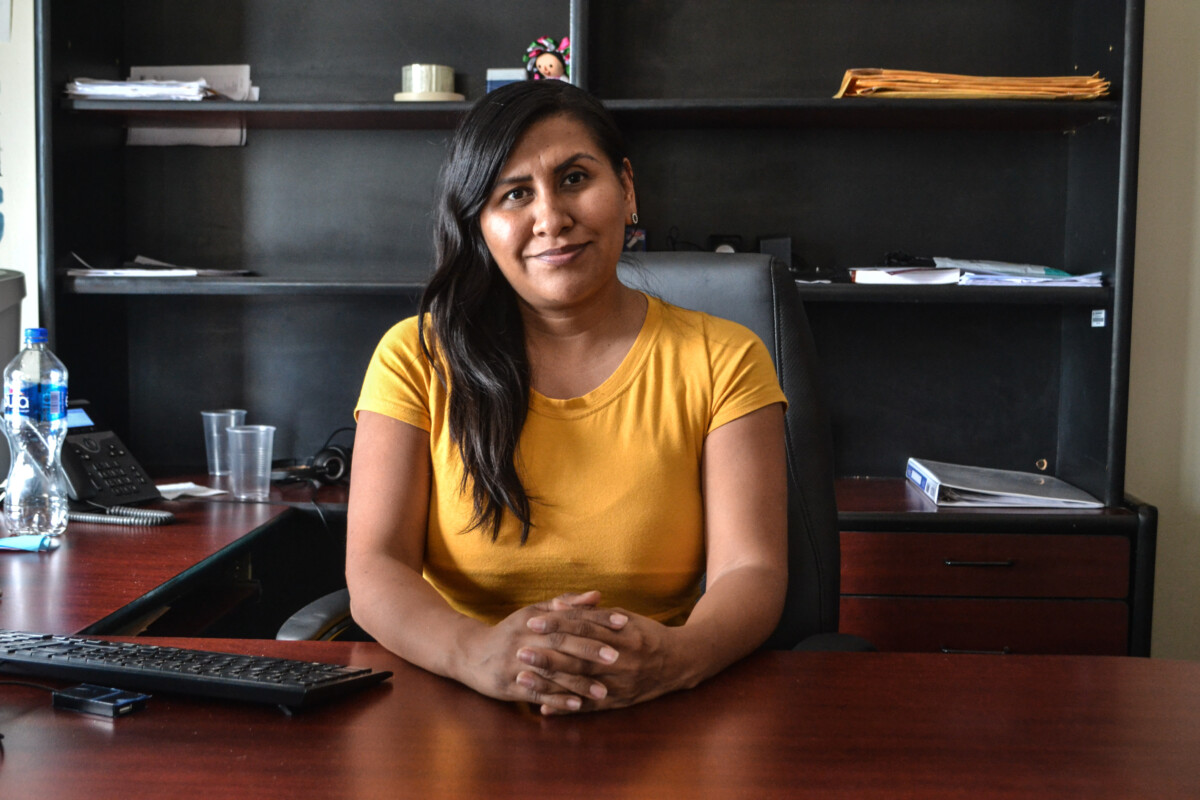Gobierno
OPINIÓN: DE NORTE A SUR
El Gobierno de México hizo un llamado a países latinoamericanos a mejorar la calidad de vida de las comunidades rurales. Foto: Quadratín CDMX.
Por: Abigail Correa Cisneros
Durante la 37 Conferencia Regional para América Latina y el Caribe (LARC) de la Organización de las Naciones Unidas para la Alimentación y la Agricultura (FAO), el Gobierno de México hizo un llamado a los países de América Latina y El Caribe a lograr una mayor coordinación regional para cumplir con los grandes retos de garantizar la seguridad alimentaria y la mejora de la calidad de vida de las comunidades rurales, ante el actual marco de incertidumbre y vulnerabilidad.
El secretario de Agricultura y Desarrollo Rural, Víctor Villalobos Arámbula, enfatizó que garantizar una vida digna dentro de los territorios rurales debe ser una alta prioridad para los gobiernos de la región. Destacó la importancia de la coordinación interministerial y la responsabilidad compartida con todos los actores de las cadenas agroalimentarias, tomando en cuenta las implicaciones de índole técnico, económico, ambiental y, sobre todo, social. “Darle de comer a quienes nos dan de comer”.
Destacó el tema de la transformación rural mediante innovaciones para erradicar la pobreza y reducir desigualdades. Villalobos Arámbula señaló que, en la etapa de la pandemia, en México las medidas de precaución se conciliaron con las del sector primario y agroindustrial.
Hoy tenemos que capitalizar esas acciones, buscar mejorar los sistemas alimentarios con calidad y atender la parte social, en pos de una vida saludable para la gente, principalmente para la del campo, enfatizó ante delegados de países de América Latina y El Caribe.
El titular de la Sader expuso que la política agroalimentaria de nuestro país tiene como principal objetivo alcanzar la autosuficiencia alimentaria, fortalecer al campo para lograr un sistema agroalimentario justo, saludable y sustentable, además de incrementar la productividad de los cultivos, sanos e inocuos, el manejo responsable del suelo y agua y el acompañamiento a los productores de pequeña escala.
DESDE EL CENTRO
El Departamento de Estado de Gran Bretaña confirmó este martes la orden de un juzgado británico de extraditar a Karime Macías, exesposa del exgobernador Javier Duarte. Macías está acusada en México de cometer actos de corrupción, como desvíos millonarios en el DIF de Veracruz… El presidente Andrés Manuel López Obrador participará en la consulta de revocación de mandato este 10 de abril y escribirá en la boleta “Viva Emiliano Zapata”. A 103 años del asesinato del caudillo del sur. El Centro Mexicano de Derecho Ambiental, reportó que, en los últimos tres años, 58 defensores del ambiente y territorio fueron asesinados en México, la mayoría de los casos están impunes hasta hoy… Que nadie se atreva a mirar feo al gobernador de Nuevo León, Samuel García, porque podría ganarse 36 horas de arresto. La presunción de inocencia no existirá en estos casos. Ya se aprobó por el Congreso, en una primera vuelta, la llamada Nueva Constitución para el estado de Nuevo León, en la que se indica que el gobernador puede ordenar arrestos para quien lo insulte, según la fracción VI del artículo 135, de la Sección Tercera.
Chapala hands over facilities for State Police barracks
Municipal and state authorities during the handover of the building on the corner of Niños Heroes and Zaragoza streets. Photo: Municipality of Chapala.
Jazmín Stengel.- The former Chapala Police headquarters at the corner of Niños Héroes and Zaragoza streets will now be occupied by the Jalisco Regional Police and the Mobility Department, thanks to the signing of an agreement between municipal authorities and the state. Chapala will continue to pay rent on the building.

Signing of the agreement between municipal and Jalisco authorities for the handover of the former Chapala Police Station. Photo: Municipality of Chapala.
The agreement established last March 25 between Chapala Mayor Alejandro de Jesús Aguirre Curiel and Regional Police Commissioner Abraham Isaac Chávez Velázquez, will allow the State Police to relocate from a small building in La Cristianía Park.
The move gives the State Police better facilities from which to continue working in coordination with the Municipal Police. This helps guarantee the safety of the population just days before the start of the Holy Week and Easter vacation period.
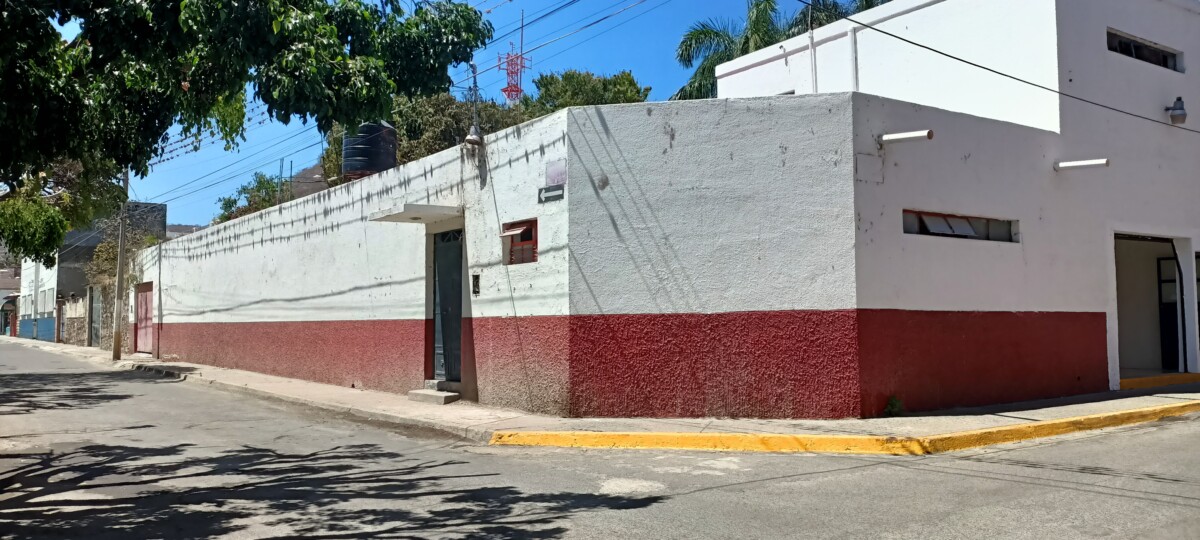
Chapala has rented the building since 1998. Photo: Jazmín Stengel.
Jalisco Secretary of Public Security Juan Bosco Pacheco Medrano said the building is a tool that dignifies police work and helps the State Police coordinate with the municipality to provide peace of mind to both residents and tourists.
“I am pleased to inform you that we have delivered dignified facilities on loan for elements of the State Security Secretariat to have their base of operations,” the mayor said through social media. “The safety and tranquility of the families of Chapala and its visitors is a priority for this government.”

The Regional Police had occupied a small building in La Cristianía Park. Photo: Jazmín Stengel.
Chapala has rented the building since 1998. It was the Municipal Police headquarters until June 2020, when they moved to their new location at the corner of Los Maestros and Isla del Presidio streets. The State Highway Police, with whom the State Police will share the building, began working out of the building a few months ago.
Translated by Mike Rogers
With purple t-shirts Chapala supports UN Orange Day against violence against women
Public and civil servants wore purple shirts to support the Unite Orange Campaign. Photo: Jazmín Stengel.
Jazmín Stengel (Chapala).- The United Nations’ «Orange Unite Campaign» was instituted in 2008 to promote the prevention of violence against women, and takes place on the 25th of each month. Although it has been a little more than 13 years since the campaign opposing violence against women was instituted, this is the first year it has been celebrated in Chapala.
In Chapala, officials and civilians wore purple tee shirts instead of the customary orange, as citizens associate the color with the feminist movement, explained Alicia Medeles Córdova. Córdova is the director of the Women’s Institute of Chapala, who made the proposal after the March 8 International Women’s Day marches and other demonstrations against gender violence in the municipality. The public security officers of the municipality also wore an orange ribbon as a symbol of solidarity with the movement.

Officers from the Municipal Police Station wearing the orange ribbon as a symbol of support for the eradication of violence against women. Photo: Jazmín Stengel.
In addition to promoting the prevention of violence against women in her locality and delegations, Córdova offers counseling and follow-up to those who have been victims of violence, harassment and other types of aggression. She invites the affected population to lose their fear of speaking out and to begin the legal process to defend their human rights.
«The objective is to make a call to the citizenship and that we raise awareness,» clarified Cordova, since the purpose of this campaign at the international level is the same: «a day to act, generate awareness and prevent violence against women and girls.»
Translated by MaryAnne Marble
Governor Alfaro’s visit to the lakeside area prompts overdue road maintenance and other work
Dirt, sticks and stones left by the October mudslides were finally removed from the bike path by city hall personnel during the Governor’s visit to supervise public works.
Staff.– Let him come more often! Governor of Jalisco, Enrique Alfaro Ramírez, visited the lakeside area on Friday, March 25th to supervise the local government. His visit not only mobilized extra security, but many municipal employees gave their best effort to make the streets and roads look impeccable. The streets of the Chapala and Jocotepec municipalities looked especially well-maintained. In one day municipal employees performed all the maintenance that had not been done since the administration took over in October.The administration made a clear effort to paint a very rosy picture of the lakeside area for the governor. In Chapala there were no garbage piles to obstruct the governor’s inquisitive eye. The intersection at the junction of the Ajijic highway and bypass had traffic personnel, which is rare even on the busiest weekends. Chapala’s boardwalk, in addition to not having a single piece of garbage, had its green areas watered, and the walkways were washed very early in the morning.
In San Juan Cosalá, Alfaro cycled along the bike path with the presidents of Chapala, (Alejandro de Jesús Aguirre Curiel) and Jocotepec (José Miguel Gómez López). For this occasion, the bike path was finally cleared of sticks, stones, and dirt left by the October landslides.
State workers even replaced the entrance sign welcoming visitors to Jocotepec (from the border with Chapala). Faded road signs were re-painted. If only the governor would come more often so that street maintenance and public services would work this way all the time.
Translated by Amy Esperanto
Garbage hidden before Governor Alfaro’s visit to Jocotepec
The Morelia highway, which is slated for improvements, has been generally used as a garbage dump. However, with the visit of Governor Enrique Alfaro, the authorities «got their act together» trying to hide the garbage that has been accumulating.
Until a week ago, bags of garbage could be seen piled up on the side of the road at the access to the Morelia highway. According to witnesses, the company GIRRSA, which has a contract granted by the Government of Jocotepec to collect garbage, is responsible for filling the banks of the beltway with garbage. In addition to the municipality, citizens have been dumping their garbage here as well.
In 2019, Governor Alfaro toured the area of the beltway, finding garbage and even giving a «slap on the wrist» to Jocotepec President Gómez López.
«Today in the afternoon our governor, Enrique Alfaro, was passing through Jocotepec; it is a shame that he sent me these images of the beltway full of garbage. Remember that our municipality is #LoHaceSuGente (The People Do It) and it is not fair that because of some people we have such a bad image,» the Jocotepec president wrote at the time.
Translated by Christalle Dalsted
Fire severely damaged Guadalajara’s famed Mercado San Juan de Dios
Firetrucks battle blaze at Mercado San Juan de Dios in the early morning hours. Photo from governor’s office video broadcast by Grupo Reforma.
Editor. Guadalajara firemen and Jalisco Civil Protection personnel were mopping up the heavily damaged Mercado San Juan de Dios this afternoon a after they brought the raging fire that began early this morning (31 de marzo) under control The fire was first reported at 2:30 am, and according to Mayor Palo Lemus, and multiple units of the Guadalajara Bomberos and the Jalisco State Civil Protection and Fire Department responded to the report of a fire possibly in the kitchen areas (later attributed to a diablito connector used to steal electricity shorting out.). No one has been reported injured.
Mercado San Juan de Dios, designed by Alejandro Zohn and opened on December 30, 1958 in Central Guadalajara, is the largest indoor Market in Latin America with a total area of 4,000 square meter and 2980 vendor stalls.
The fire quickly spread to all four levels of the emblematic building, affecting a wide range of merchants, including clothing, shoes, arts, crafts and food. As of this afternoon 384 stalls in the mercado were reported destroyed (later raised to an estimated 430 by Civil Protection officials), according to reports from people on the scene in a video posted by Grupo Reforma. This number has not been confirmed by Laguna or official sources and may be much higher.
Javier Mina Avenue along the side of the mercado was closed as of 6:30 am and had not completely reopened as of 1:00 pm as fire crews were still mopping up and assessing the damage and the dangers in the smoking building.
Victor Roldan, General Director of the Jalisco State Civil Protection and Fire Department noted that over 300 personnel and 80 vehicles eventually were used in extinguishing the blaze. While no official assessment of damage was available as of 1:00 pm, Roldan told media that the building was not totally destroyed. Merchants were not allowed into the building because of the danger of spot fires and structural collapse, but many gathered around the security perimeter set up by fire and police, telling on-scene media that their entire livelihood may have gone up in smoke.
Governor Alfaro announced the rehabilitation of the Auditorio de la Ribera will be completed by the middle of the year
Architects and those in charge of the work, explained the works to the Governor of Jalisco, Enrique Alfaro Ramírez. Photo: Sofía Medeles.
Sofía Medeles (Ajijic).- After his March 25 tour of the Auditorio de la Ribera in Ajijic, Jalisco Governor Enrique Alfaro Ramírez, announced that the remodeling of the Auditorio will be completed in approximately 4 months.
Although previously, those in charge of the project had said that they had no date for the beginning of the third and last stage of the renovation, Alfaro Ramírez stated during his visit that it should be finished in four months and the cultural center should be up and running by the middle of this year.
«The last stage includes the entrance space, details in the auditorium and adjustments that had to be made at the end, but more than anything else, the entrance, the pond and specialized equipment,» the governor said.
He pointed out that, although 70 million pesos have already been invested in the project so far, a budget for the equipment for the center has yet to be designated.
«A budget is being developed and we are looking to involve the businesses of Chapala that offered to help. The budget will be ready in the following weeks and we will see if the private initiative will lend us a hand. Surely the equipment will also be ready within the remaining four months,» he added.
At the end of the tour of the facilities of the cultural complex, Chapala municipal president Alejandro de Jesús Aguirre Curiel, thanked the governor for the space, asserting that it will be of great importance for Ajijic, which has many talented performing artists and traditions, so it will be a good place for them to continue developing.
Also present during the governor’s visit were Alejandro Guerrero, one of the architects in charge of the project, Lourdes González Pérez, head of the state’s Culture Secretariat, and congresswomen María Dolores «Lolis» López Jara , and Claudia Murguía Torres.
The rehabilitation work began in 2020 and is part of a state project called «Cardinal Culture», which aims to develop cultural activities outside the capital of Jalisco. The auditorium will not only host artistic presentations of different disciplines, but will also host courses, as well as offices of the Jalisco Ministry of Culture.
Translated by Patrick O’Heffernan
Governor of Jalisco announces investment of 213 million pesos for four projects in Chapala
Jalisco Governor Enrique Alfaro Ramírez together with Chapala President Alejandro de Jesús Aguirre Curiel during the dedication of the 16 kilometers of bicycle lanes in Chapala, in front of La Milagrosa park, at the entrance to the municipal capital. Photo: Jazmín Stengel.
Jazmín Stengel(Chapala).- Jalisco governor Enrique Alfaro Ramírez announced an investment of more than 213 million pesos for four projects during his working tour of Chapala on March 25, 2022. He also inaugurated the Chapala – Jocotepec bike path, toured the 63.32 million pesos rehabilitation of the Auditorio de la Ribera and promised funds for the rehabilitation of the Santa Cruz de la Soledad highway to Ixtlahuacán de los Membrillos.
During his tour he announced the upgrades to Francisco I. Madero Avenue in the municipal capital and, and the Telesecundaria ‘Guadalupe Victoria’ school in Santa Cruz de la Soledad, and more facilities for the Instituto Tecnológico Superior Mario Molina’ campus.
The Instituto Tecnológico Superior will receive 40 million pesos to build 18 new, fully equipped classrooms, multi-purpose rooms and a library. In addition, Governor Alfaro promised to have the Jalisco High Speed Internet Network ready in the next three weeks. This network will also be implemented at the ‘Guadalupe Victoria’ high school.
During his visit to the Telesecundaria in Santa Cruz de la Soledad, the governor said he had spent $12.9 million pesos on the new infrastructure and promised those present to be able to inaugurate the new classroom modules.
Governor Alfaro Ramírez inaugurated the 16 kilometers of bicycle lanes that were built in the municipality of Chapala as part of the state program MiBici. The work that began in 2019, was carried out in two stages with a complementary project that had a cost of 87 million pesos.
The bikeway, which starts in the municipal capital of Chapala and ends at the junction of the Jocotepec beltway along 24.3 kilometers, had a total cost of 211 million pesos, said Enrique Alfaro.
The Governor also announced an upgrade to the entrance to Chapala at Francisco I. Madero Avenue, a 900 meter-long project designed in multiple stages to avoid affecting traffic at Chapala’s busiest intersection. He showed a video detailing how the project would look.
The project has three main objectives. The first is to improve the roadway, replacing the current cobblestones with hydraulic cement and renovating the water and sewage networks that run underneath it. The second is to arrange the parking lot in parallel so that cars «no longer back up» along the avenue, thus avoiding traffic mishaps and maintaining two traffic lanes.
Finally, the project will improve the image of the city’s entrance by installing a fountain on the walkway, almost in front of the San Francisco de Asís parish. It will also extend the bicycle path to the boardwalk, turning the avenue into a «shared street», and modernize the existing outdoor furniture and add new trees.
The 17.5 million-peso cost for the first stage has been secured and the work will begin after the Holy Week-Easter vacations. Although no budget for the total work was disclosed, Chapala Mayor Aguirre Curiel estimated a total cost of approximately 80 million pesos.
A percentage of the still unconfirmed budget will be given to the avenue’s merchants so that they can also improve their image by making it more uniform. This work has been delegated to the Chapala City Council to begin the organization and work with merchants. The construction will be managed by the Secretariat of Infrastructure and Public Works of the State (SIOP).
Translated by Patrick O’Heffernan
Preparations underway for recall referendum of AMLO
Patricia Santos Quevedo, executive vocal of the 17th Executive District Board of the National Electoral Institute (INE). Photo: Héctor Ruiz.
Héctor Ruiz Mejía (Jocotepec).- Jocotopec will oversee the recall referendum known as “Consulta de Revocación de Mandato” (Referendum for revocation of mandate) to which the President of the Republic, Andrés Manuel López Obrado (AMLO), will be subjected on April 10.
On March 23, at around 11:00 a.m., members of the National Defense Secretariat (SEDENA) delivered to the personnel of the 17th Executive District Board of the National Electoral Institute (INE) the 278,286 ballots for the democratic exercise.
The question which citizens will be asked to answer is «Do you agree that Andres Manuel Lopez Obrador, President of the United Mexican States, should have his mandate revoked due to loss of confidence, or continue in the Presidency of the Republic until the end of his term?»
At least 170 polling places will be installed in District 17, consisting of 15 municipalities, including Chapala and Ixtlahuacán de los Membrillos. There will be a special polling place for people outside their electoral area, which will be in the municipal seat of Jocotepec.
The polling places will be supervised by five officials: a president, a secretary, a teller, and two alternates, for a total of 855 participants in the district. They will be instructed by 31 trainers and four field operational electoral supervisors.
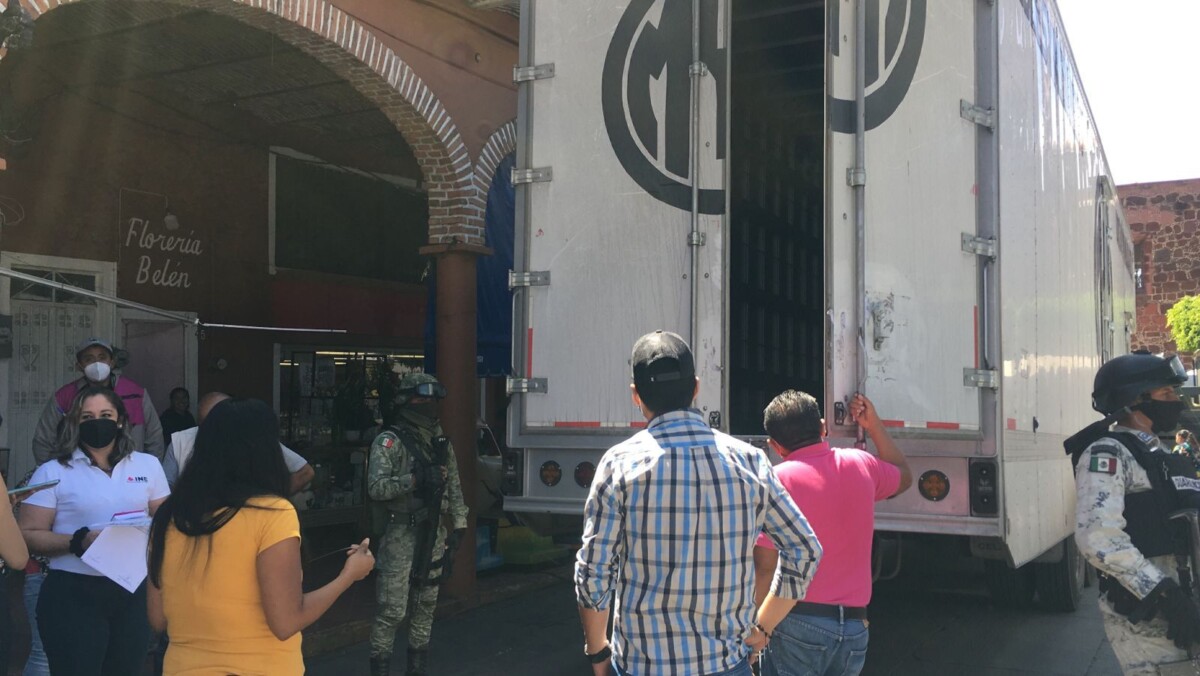
On March 23rd SEDENA delivered more than 270 thousand ballots to the 17th Executive District Board of the INE. Photo: Héctor Ruiz.
Patricia Santos Quevedo, spokesperson for the 17th Executive District Board of INE, said that they are working so that no person of the 272,259 that make up the nominal list will be left without casting their vote.
«This amount is what we are managing, counting and sealing here at INE to guarantee that all citizens have their ballot to cast their vote» commented Santos Quevedo.
In contrast, she said that it was not possible to install the same number of polling places for the 2021 electoral exercise, when 459 were installed. This referendum has a national budget of one billion 567.4 million pesos (about US$28 million), compared to the nearly 4 billion pesos (about US$200 million) of the last elections.
Patrica Santos emphasized that INE has made every effort to provide citizens with the necessary tools and she urged citizens to participate this coming April 10 to exercise their vote for or against AMLO.
As of March 28, the «locate your polling place» platform will be available at www.iepcjalisco.org, where citizens will be able to find their poll location.
Translated by Nita Rudy
Lack of working streetlights leaves Chapala inhabitants feeling insecure
One of the private neighborhoods on Pino Suaréz street in the municipal capital. While it is illuminated, it is not enough, according to the neighbors. Photo: Jazmín Stengel
Jazmín Stengel (Chapala).- Although the municipal capital of Chapala has enough streetlights, the inhabitants feel insecure because many of them aren’t working or aren’t well placed, as evidenced by a tour of the San Miguel, Puerta del Horno and Plaza de Toros neighborhoods.
During the tour we interviewed more than 10 pedestrians and neighbors of the area, who said they felt unsafe despite the functioning street lights, explaining that «the lamps do not illuminate where it is most needed.”

The beginning of Privado Aguascalientes with all its lights on. Photo: Jazmín Stengel
On Privada Aguas Calientes and Prolongación Pino Suaréz, two street lights were repaired more than a year ago and have not broken down again, commented one of the neighbors, who pointed out that a well-lit street is safer for both pedestrians and residents.
A little further on, on the third bridge of Pino Suarez Street, the street lights were repaired a few months ago but have not been maintained.

Guayabos Street, one of the darkest streets in the municipality. The neighbors say they have never had electricity here. Photo: Jazmín Stengel
The residents of Guayabos Street, from the intersection with Pino Suarez and Plutarco Elias Calles, stated that they have never had any lighting.
In view of this problem, the coordinator of Municipal Public Services, Jose Antonio Urzua Gracían, stated that he is working full time to solve the lack of lighting in the municipality, despite being left with serious deficits in vehicles and tools since the change of administration.
An analysis made by Antonio Urzua pointed out that in the municipality there are about 6,000 streetlamps, but only 15 to 20 percent were functional when the administration started. «We received a dark municipality, with a great number of complaints,” he said. Six months later they have managed to solve 60 to 70 percent of the problems in the towns of the Chapala municipality.

Jóse Antonio Urzua Gracían, coordinator of Municipal Public Services in the municipality of Chapala, during the interview with Laguna. Photo: Jazmín Stengel
So far, 600 new streetlights have been purchased and 400 more have been repaired by recycling the most useful parts to others, so that only $1,200,000 pesos (about US$60,000) have been spent on repairs, in addition to 400,000 pesos (about US$20,000) on replacing wiring, which is often stolen.
The recycling strategy is useful for saving money, and also to adapt to the lamps already in place. Not all of them are the newer LED technology, and many break down and cannot be repaired due to lack of compatibility with the available parts, or because their life span has been exhausted.
Translated by Sandy Britton
© 2016. Todos los derechos reservados. Semanario de la Ribera de Chapala

